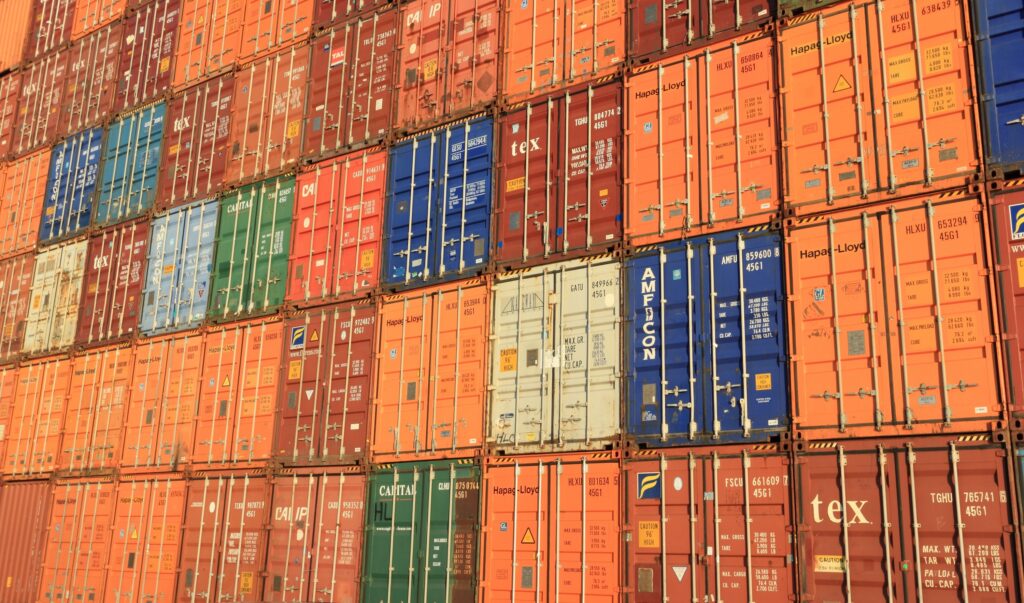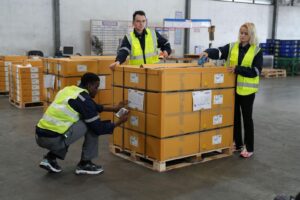Table of Contents:
-
What is CBP Entry Type 86 Clearance for eCommerce Shipments?
-
Clearance Process for Section 321 Type 86
-
Benefits of CBP Entry Type 86 Clearance eCommerce Shipments
-
CrimsonLogic Solutions for CBP Entry Type 86 Clearance for eCommerce Shipments
-
CALISTA Mobile App for eManifest Filing
-
CrimsonLogic Managed Services for eCommerce
The explosion of ecommerce and the recently revised NAFTA have drastically increased the volume of low-value parcels entering the United States. While this presents plenty of opportunities for small and midsize businesses, challenges such as technology gaps, customs compliance and cost control remain. U.S. Customs and Border Protection (CBP) understands the issues faced by trade participants and has always aimed to facilitate the flow of legitimate trade while ensuring national safety and security. The introduction of CBP entry type 86 clearance for ecommerce shipments is part of a larger initiative to secure borders while encouraging cross-border trade.
What is CBP Entry Type 86 Clearance for eCommerce Shipments?
CBP entry type 86 is a new release option for Section 321 shipments. Section 321 shipments can enter the country without a formal entry and free of duty and tax as long as requirements are met. Eligible shipments are those valued at $800 or less for one shipment per person per day. Importers cannot consolidate multiple shipments into a single Type 86 entry. In addition, only one bill of lading (master or house) must be associated with the entry. To avoid rule violations, CBP requires traders to comply with limitations and exercise reasonable care.
The majority of ecommerce parcels are entered as Section 321, but the current process only covers air and truck shipments and shipments that are not regulated by partner government agencies (PGAs). If you are an ecommerce retailer importing a large volume of low-value cosmetic parcels, for example, you need to file a separate entry and provide more information to the regulating agency and to CBP. This significantly prolongs the clearance process and delays last-mile delivery to customers.
Entry Type 86 is designed to address this issue by extending eligibility of Section 321 shipments to include low-value shipments in all modes of transport and shipments regulated by agencies like the Food and Drug Administration (FDA). Entry type 86 allows PGA-regulated low-value shipments in all modes of transport to enter the country as Section 321, thus expediting the cargo clearance process.
For CBP and government agencies, Entry Type 86 improves tracking and targeting of high-risk shipments and Section 321 violations. It helps CBP officials better identify illicit parcels while accelerating the processing of legitimate goods.
Clearance Process for Section 321 Type 86

Entry Type 86 is currently a voluntary entry type. Importers and brokers can still use the release on manifest process for Section 321 shipments; Type 86 is simply an extension of that. Type 86 is considered a customs business filing because of the required Harmonized Tarff Schedule (HTS) code. The HTS classifies all the products in a shipment and is used for trade control purposes.
Like Section 321 shipments, Type 86 entries are not subject to duties or taxes. However, if the shipment requires a CBP fee, it must be cleared under a Type 11 informal entry or Type 01 formal entry. Informal entries are shipments valued at $801 to $2,500, while formal entries are those valued at over $2,500.
It is the responsibility of the importer on record/nominal consignee or their authorized representative (licensed customs broker) to file Type 86 entries. The broker must have a Power of Attorney signed by the consignee or importer in order to clear Type 86 goods. Some of the required information on the Type 86 entry are consignee name and address or Importer of Record (IOR) number.
PGA-Regulated Goods
All goods that require PGA data to be submitted to CBP are eligible for Type 86 entry, except for PGA-regulated goods that require a fee to be collected. Other exemptions include goods subject to countervailing/antidumping duty, goods subject to quota, and some tobacco and alcohol products.
Filers can usually submit a Type 86 entry for commodities under chapter 98 classification. In some cases, you need to provide only the HTSUS subheading. If the merchandise falls under chapter 1-97, filers must use the 10-digit HTS number which CBP uses to determine the type of cargo entering the country.
Filers can submit Type 86 entries under chapter 99 if the HTSUS number under chapter 1-97 is also provided and as long as the merchandise is not subject to ADD/CVD, quota and other restrictions. Other goods that are eligible for Type 86 entry are those with Section 301 and Section 201 requirements (similar to entries with Section 232 requirements), as long as the goods meet de minimis thresholds and are not subject to quota.
Benefits of CBP Entry Type 86 Clearance eCommerce Shipments
One of the biggest advantages of the Type 86 entry is the expedited clearance process for regulated low-value merchandise. Retailers can now process large volumes of regulated Section 321 imports without having to file a formal entry.
Type 86 entries must be filed through the Automated Broker Interface (ABI) in the Automated Commercial Environment (ACE). ABI is the main platform for data exchange between importers/brokers and CBP. Filing Type 86 entries for ecommerce shipments via ABI is more efficient and consolidates shipment data in one place for better visibility.
Filers can access ACE reports with their ACE Portal account for reporting, record-keeping and compliance auditing. Reports are also useful for tracking historical ecommerce shipments, data analysis and forecasting.
Type 86 collects Section 321 shipment data in one place so CBP officials can improve targeting, risk assessment, and security. Accurate shipment data makes it easier to identify and move illicit goods while accelerating the processing of legitimate shipments.
Type 86 makes it easier to identify rule violations (including intellectual property rights violations) so PGAs can improve enforcement, targeting, reporting, and trade control.
CrimsonLogic Solutions for CBP Entry Type 86 Clearance for eCommerce Shipments
CrimsonLogic offers flexible, industry-leading solutions to streamline CBP entry type 86 clearance for ecommerce shipments.
CALISTA Mobile App for eManifest Filing
CrimsonLogic recently launched a new mobile app focusing on an eManifest filing for highway carriers. The app allows truckers to take photos and send documents electronically to CrimsonLogic instead of using analog fax machine services at truck stops and kiosks. No need to pay exorbitant faxing charges or rent a monthly eFax service.
All you need to do is send photos and shipment documents to CrimsonLogic and we will take care of the rest. SMS status notifications are sent to your inbox along with a cover sheet once the eManifest has been accepted by CBP. The CrimsonLogic mobile app is completely free (included in the CrimsonLogic eManifest filing subscription plan) and supports unlimited eManifests for high-volume Section 321 and Type 86 entries.
CrimsonLogic Managed Services for eCommerce
CrimsonLogic Managed Services for eCommerce is a cost-effective alternative to clearing Section 321 and Type 86 shipments via traditional Express Consignment Carrier Facilities (ECCFs). Instead of just two airports, CrimsonLogic lets you choose from four major U.S. airports (LAX, SFO, JFK and ATL).
There is no need to pay the $1 fee per house bill because this is not an express service. While cargo clearance is slower (up to 4 days depending on the airport), more ports and pricing options are available so you can optimize flexibility and save money. CrimsonLogic Managed Services for ecommerce comes with 24/7 expert assistance on Section 321 and Type 86 clearance and other customs compliance issues.
Learn more by visiting our page on type 86 clearance for eCommerce shipments or contact ustoday!






